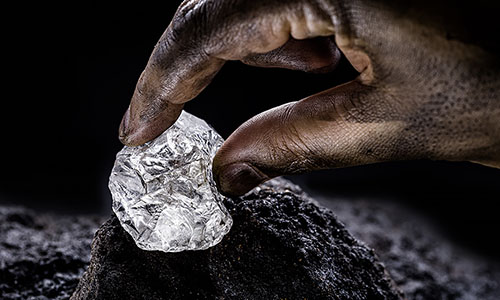Raw-Materials Protectionism
Want more free featured content?
Subscribe to Insights in Brief

The world's clean-energy transition is sending companies scrambling to access and control supplies of raw materials that are critical for future economies. Demand and prices for minerals such as lithium, nickel, cobalt, and rare earths have soared while deteriorating relations between Western democracies and autocratic nations—notably, Russia and China—have led to energy-trade disruptions and rising protectionism. Nations are pursuing a variety of ways to secure raw-materials resources and protect themselves from ongoing supply-chain inflation.
Historically, many poorer nations with valuable mineral resources have earned wealth by exporting unprocessed resources to wealthy developed nations. This pathway often bred corruption and entrenched geopolitical inequities. Some wealthy nations actively worked to destabilize governments that resist export deals and replace them with friendlier governments. Resource-rich countries such as Indonesia and Ghana have sought to encourage value-added processing and manufacturing by attracting foreign investors with capital and expertise to help build up domestic workforces and infrastructures and promote good governance. Zimbabwe is on a pathway to become a major lithium exporter that could meet 20% of global lithium demand; however, the nation hopes to use its resources as a springboard to create a domestic battery-manufacturing industry. In December 2022, Zimbabwe halted exports of all raw lithium except such exports with written permission from the Ministry of Mines and Mining Development—in part to halt the loss of billions of dollars in revenue resulting from illegal trade in which multinational companies were participating.
New US government subsidies aim to drive huge green investments with the specific purpose of building up local raw materials and manufacturing capabilities. The US Inflation Reduction Act of 2022 (IRA) commits more than $369 billion in the next ten years to subsidize clean-energy deployments, including battery and critical-metal supply chains. IRA provisions include requirements for lucrative tax credits to apply. For example, final electric-vehicle (EV) assembly must occur in the United States, and 40% of battery metals and 50% of battery components must come from US or North American production. Global cleantech investments are now flowing to the United States, but many other countries fear that growing competition for materials and technologies will increase their costs and could derail their energy goals. The European Commission is pursuing its own incentives to improve the attractiveness of European cleantech manufacturing. Although Europe has some of the world's most aggressive climate regulations and has invested heavily in EV capacity and supply chains, the region's lagging capabilities in metals processing could hurt its plans for expansion.
Today, China dominates global cleantech manufacturing, which includes the critical mineral supplies that it draws from many countries. China continues to build up its massive capabilities, but many nations fear the strategic risks of depending on China for minerals, given that the nation has used such dependence to punish rivals. Growing concerns about the social and environmental impacts of China's minerals activities could also lead to trade barriers against China. India, which will become the world's most-populated country in 2023, is targeting the rapid development of its green-energy industry and could become a major competitor to China in raw-materials markets.
Growing mineral needs are driving opportunities to develop new—and preferably more sustainable—resources. Recycling lithium-ion (Li‑ion) batteries will become increasingly common as more EV batteries reach their end of life. Manufacturers are improving process efficiencies, and regional recycling hubs are emerging. For instance, start-up Redwood Materials has raised nearly $800 million from venture investors and recently won a $2 billion conditional loan guarantee from the US Department of Energy to expand its battery-materials campus in Nevada. The company is collaborating with Toyota Motor Corporation to create at the site the first fully closed-loop Li‑ion-battery-manufacturing plant in the United States. Further improvements in battery recycling are still necessary to reduce costs and the use of toxic chemicals. In one recent advance, researchers at Lawrence Berkeley National Laboratory unveiled Quick-Release Binder—a new material that holds together the active ingredients in a battery and could make recovering the valuable materials in Li‑ion batteries easier and cheaper and even simplify battery manufacturing. The current battery-recycling process requires shredding a battery and using harmful solvents to separate the useful materials. In contrast, recycling a Quick-Release Binder battery requires only opening the battery, shaking it gently in room-temperature alkaline water, and filtering the separated elements out of the water for air‑drying.
Global market responses to tight raw-materials supplies may circumvent shortfalls of critical minerals in the coming years. The US Geological Survey reports that reserves of key commodities—such as lithium, nickel, graphite, and copper—have seen a major upswing since 2018, in line with rising prices and expenditures in the mining industry. Automakers and battery developers are also investing in mining and redesigning battery technologies to reduce or eliminate the need for scarce minerals. Goldman Sachs Group has suggested that the boom in battery materials has already peaked and that today's large investments in new supplies may lead to much lower mineral prices later in the 2020s.